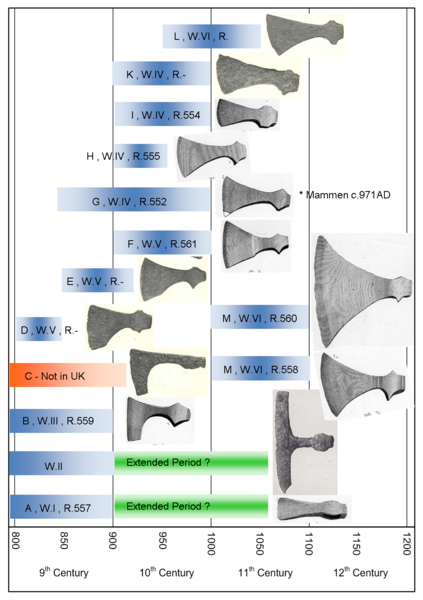Ivan Khan
Knight

reiksmarshal said:I think they should have a chance to crush through blocks as well. Two handed axes were powerful and have good amount of weight behind them. They were certainly capable of smashing through a shield and damaging the target behind them.
True, though the head of war axes unlike utility axes were normally much lighter. To expound on that high end axes should be able to have the balanced trait. I remember reading or was it watching? I think both that many of the medieval weapons we often think about as huge brut instruments were surprisingly light and balanced. Much of the myth of heavy hard to swing weapons of the age are based on Victorian replicas that looked good but were never meant to be weapons.
For cutting/slashing Axes concentrated the blow on a small area, so that it was often able to cut through light plates and armor - swords had the advantage of a long cutting surface, which made it more likely to do cutting damage.
For thrusting/piercing axes had horns with a sharp tip that protruded, though not as efficient as a spear point or dagger it made nasty wounds if it got through to flesh. Few German (including Viking) swords were used for thrusting, though most did have some sort of tip that was capable of it.
Blunt damage -- both axes and large swords caused blunt damage. There is no way of knowing what was the practice at the time, but it was common in the era when blades were still important weapons that they were not sharpened at all. Perhaps this is why the oft told tale of the crusading King Richard meeting Saladin and being amazed at the ability of the Eastern swords sharpness in its ability to cut a thread, but that the Crusaders were unimpressed by it as having an application in war. If you have any swords around the house try it yourself. I have a claymore I have never sharpened but it cuts through targets despite this. Being unsharpened had an advantage as it made the edge better able to withstand nicks and damaging yourself especially if it was unsheathed like most axes and large swords were in the era. If a clean blow from an axe or large sword did not go through the armor it would still have seriously uncomforted the target, much more than the club or other light blunt weapons.














